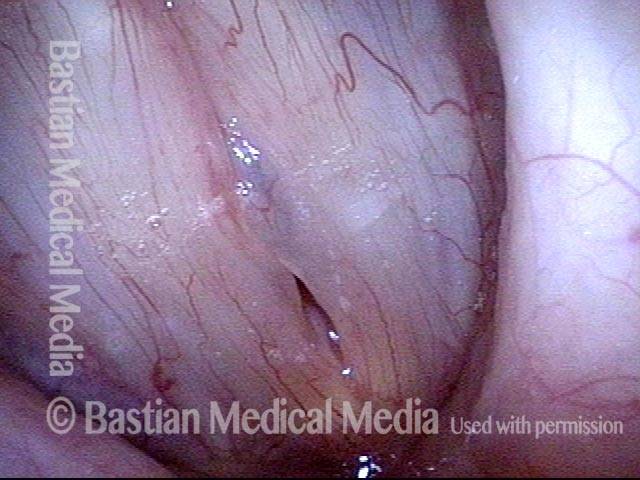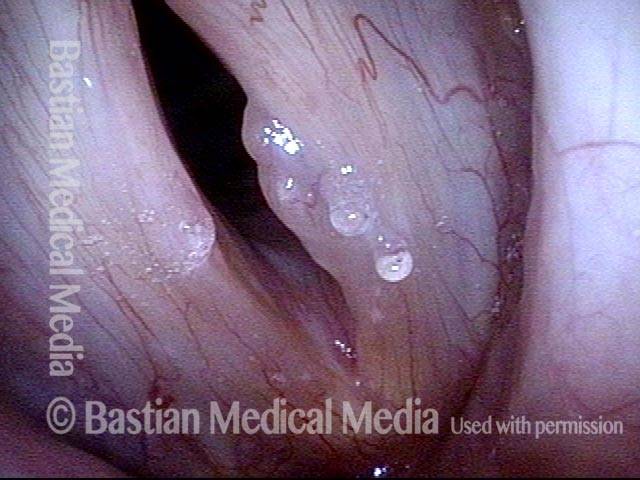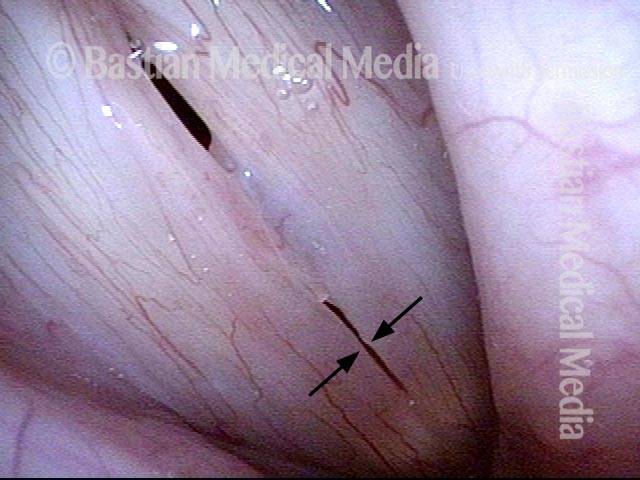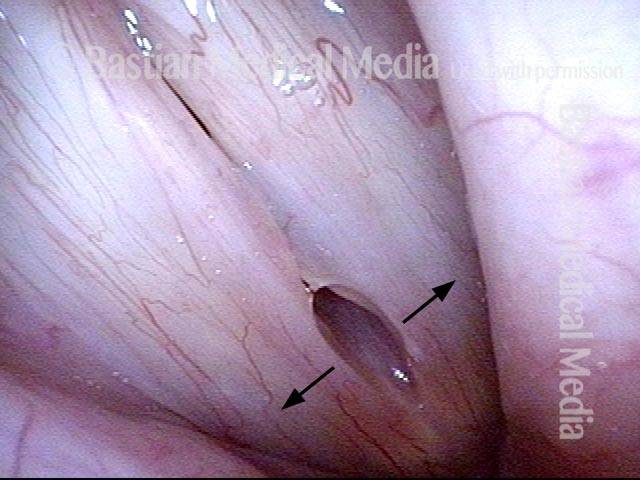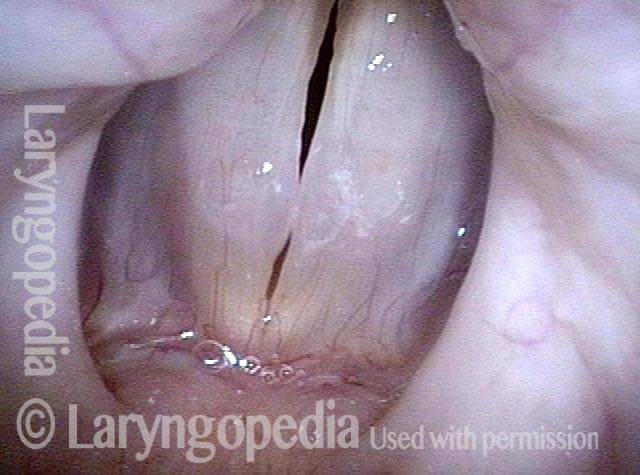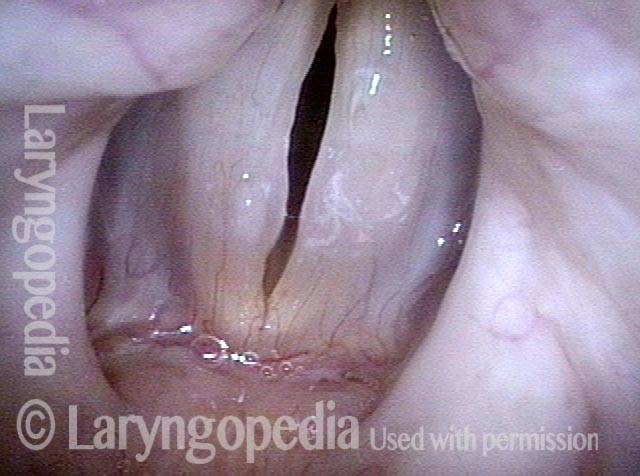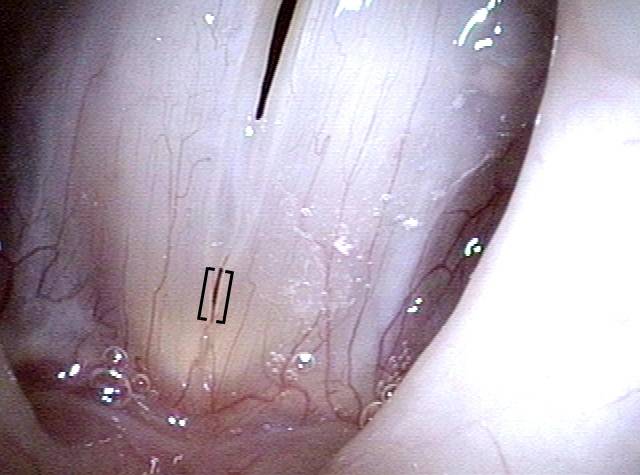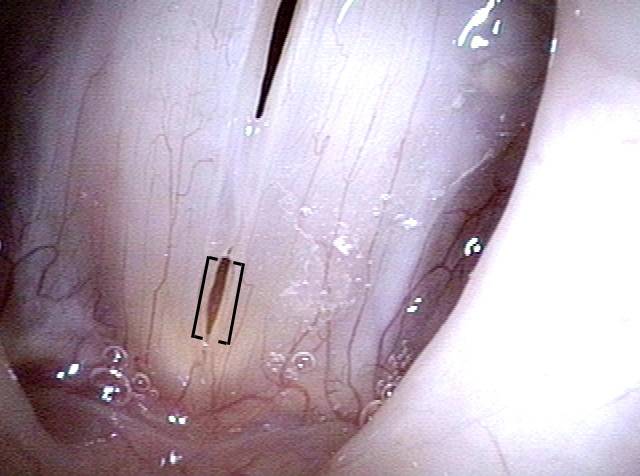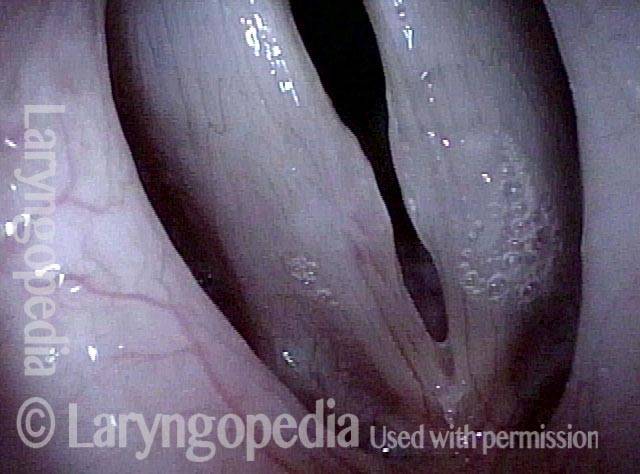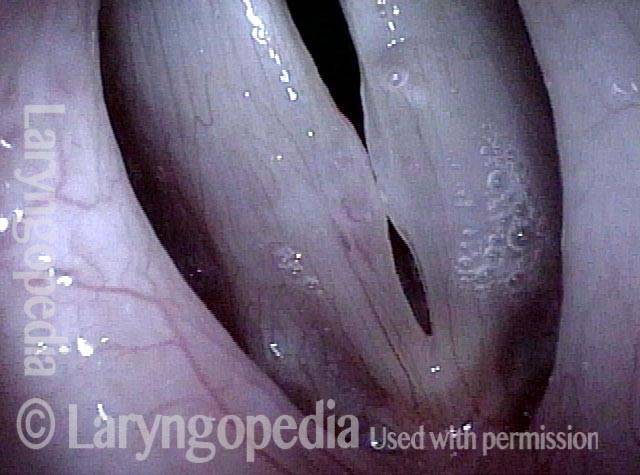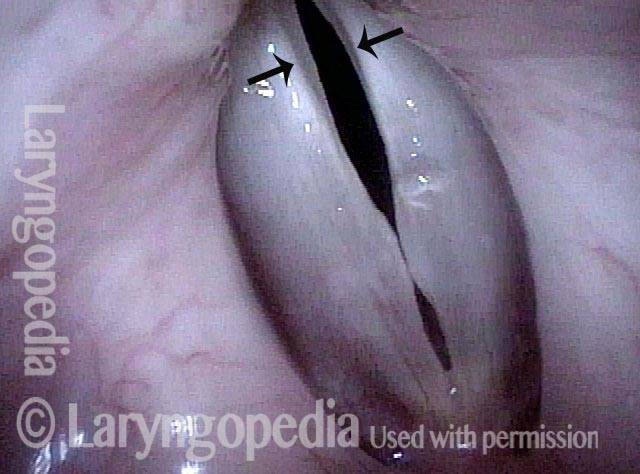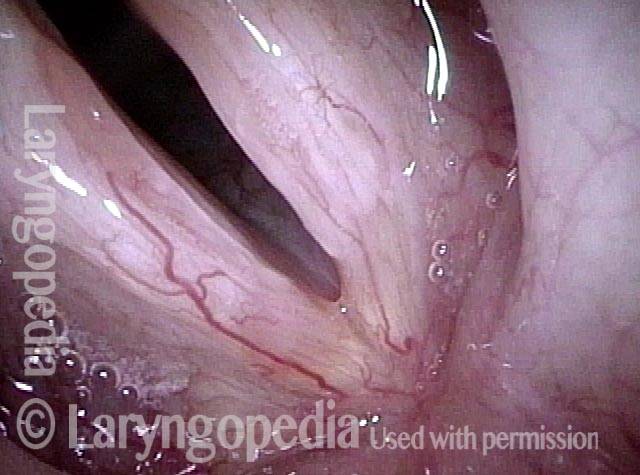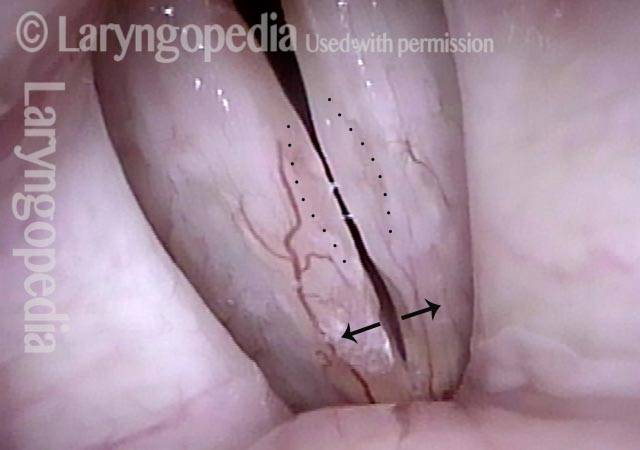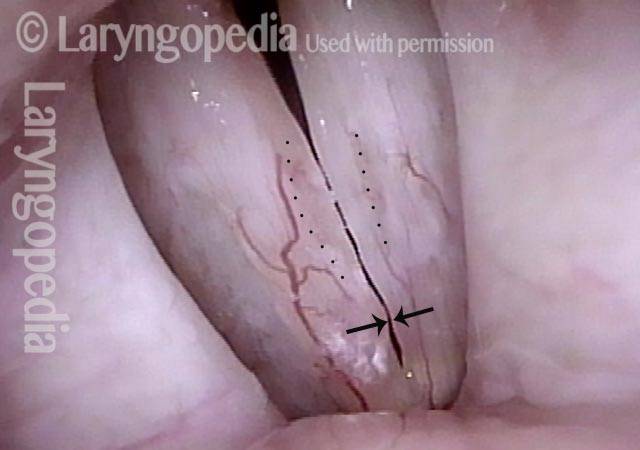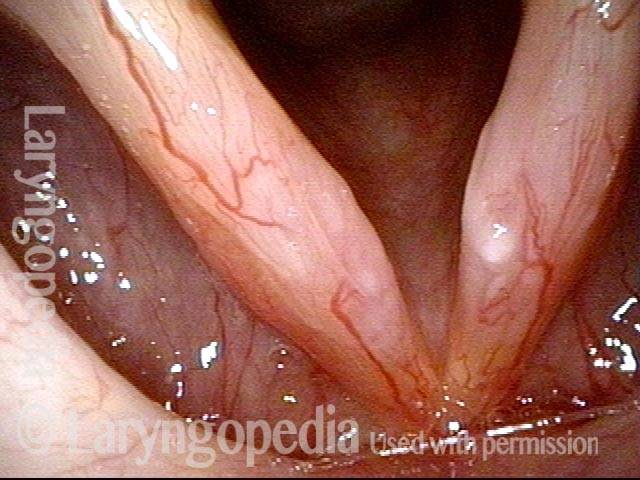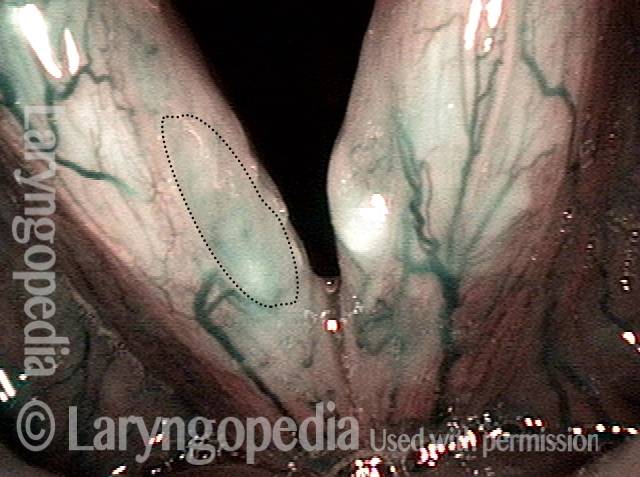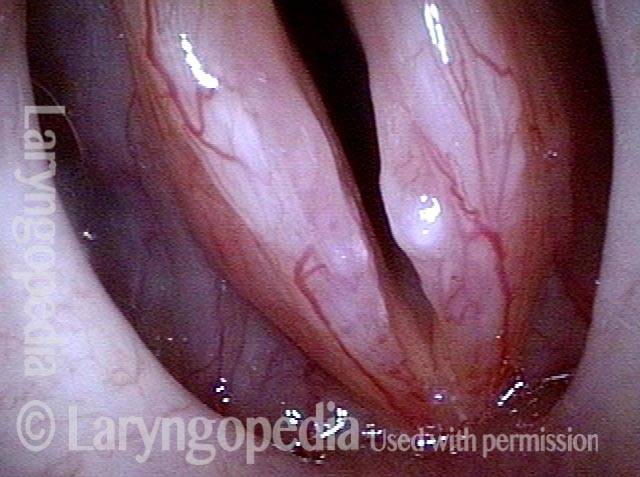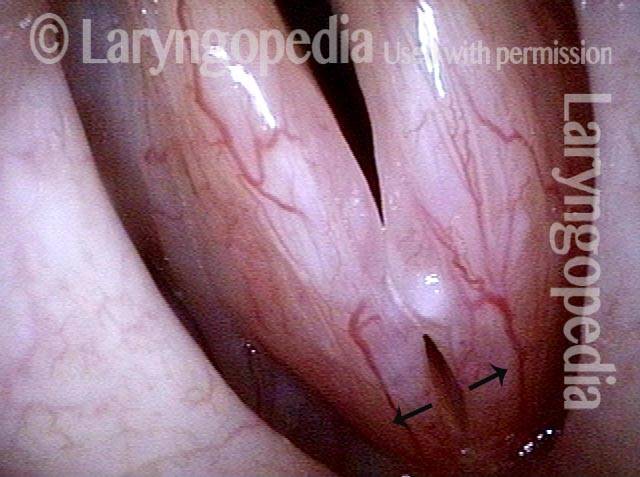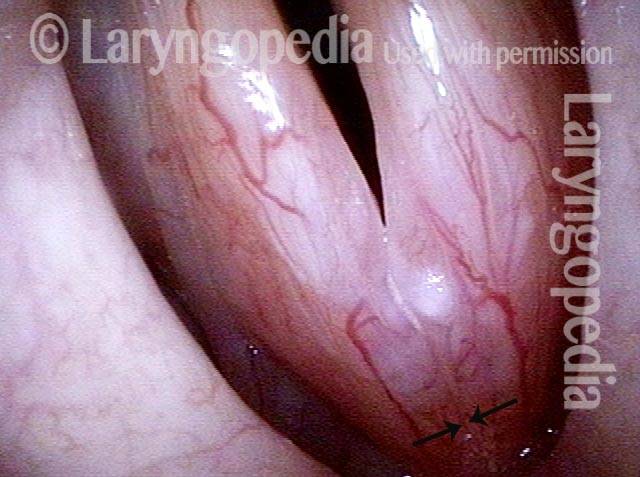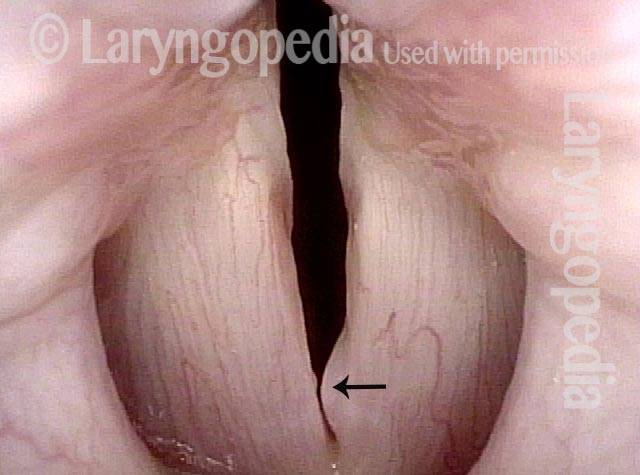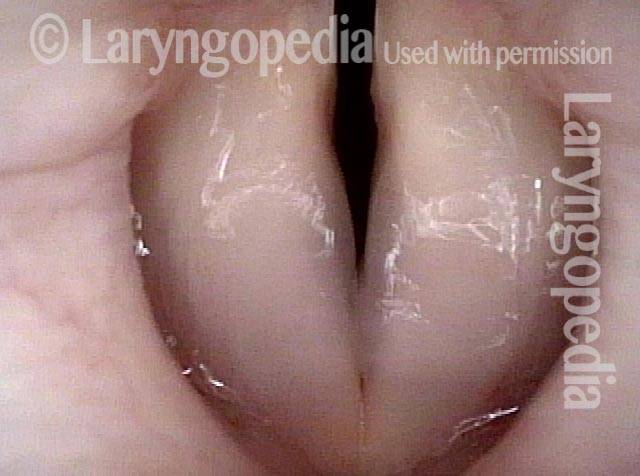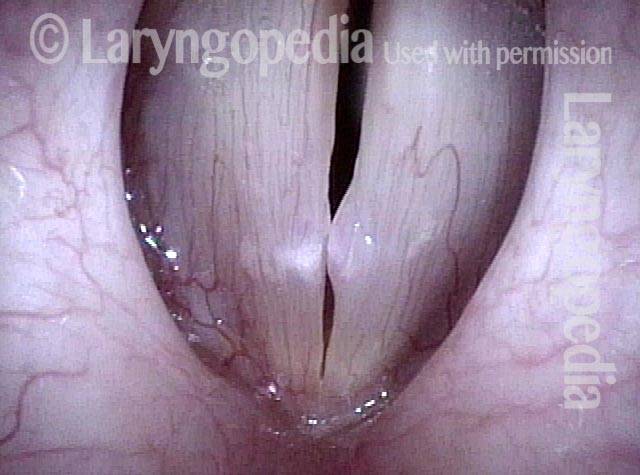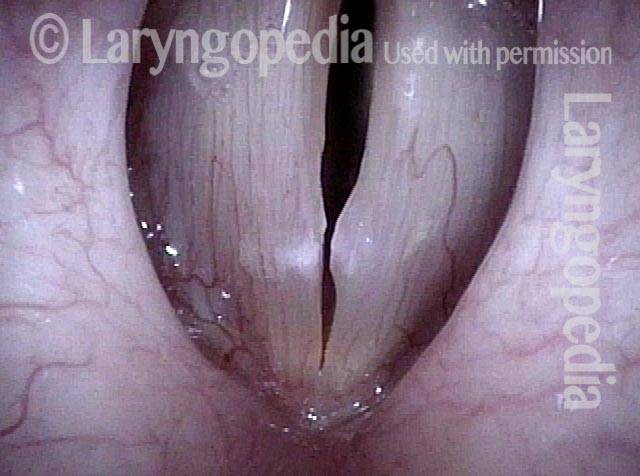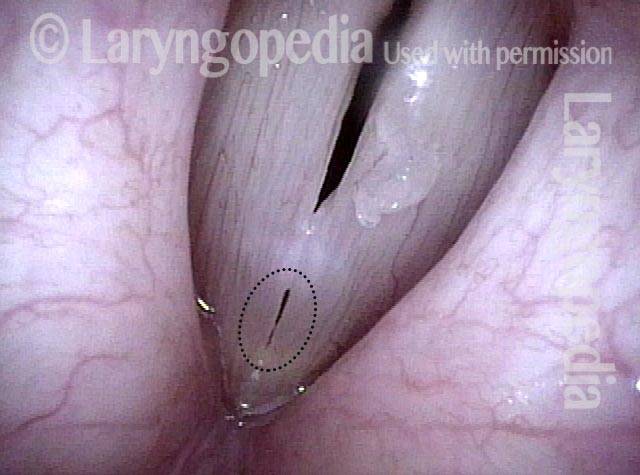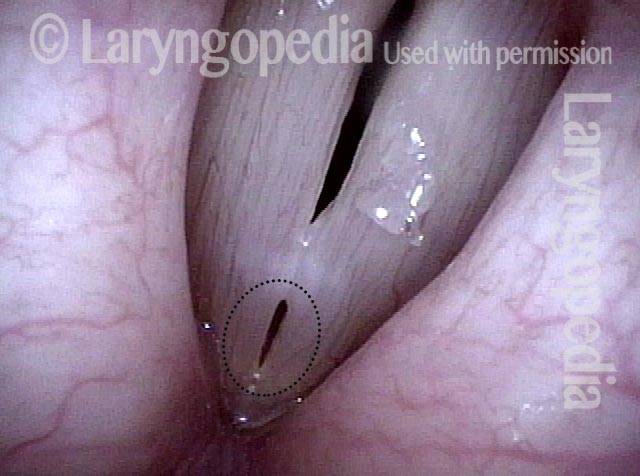Segmental Vibration
In the normal larynx, segmental vibration occurs when both chest and falsetto (head) registers are produced by vibration of the anterior 2/3 of the vocal cords. The posterior 1/3 is “inhabited” by the arytenoid cartilage and does not vibrate.
In certain pathological circumstances such as displayed in the photo sequences below, only a small part of the vocal cords vibrates.
Causes and Symptoms
This segmental vibratory phenomenon is typically seen in vocal cords that are damaged—such as by vocal nodules, polyps, cyst, scarring, etc. In such persons, upper voice is typically particularly impaired, until, as the person continues to try to ascend the scale, suddenly a crystal-clear “tin whistle” kind of voice emerges and may continue upwards to very high pitches.
Some in the past have talked about flagelot, flute, bell, or whistle register. We suspect that this was in the days before videostroboscopy and at least in some cases may have been segmental vibration.
The best way to determine if what sounds like a “tin whistle” upper voice extension is due to segmental vibration is by videostroboscopic examination during that kind of phonation. The other way is for the individual to produce their “tin whistle” kind of voice very softly and then try to crescendo.
If full length vibration, smooth crescendo will be possible. If segmental, there will be a sudden “squawk” as the vocal cords try to go (unsuccessfully) from segmental to full-length vibration.
Segmental Vibration Compared to Full-length
Translucent polypoid swellings (1 of 4)
Translucent polypoid swellings (1 of 4)
Open phase, E3 (2 of 4)
Open phase, E3 (2 of 4)
Closed phase, E4 (3 of 4)
Closed phase, E4 (3 of 4)
Open phase, E4 (4 of 4)
Open phase, E4 (4 of 4)
Whistle Register or Tin-whistle Segmental Vibration?
Closed phase (1 of 4)
Closed phase (1 of 4)
Open phase (2 of 4)
Open phase (2 of 4)
Segmental vibration (3 of 4)
Segmental vibration (3 of 4)
Whistle register (4 of 4)
Whistle register (4 of 4)
Search not Only for Nodules, but Also for Segmental Vibration and Look at the Posterior Commissure for MTD
Open phase (1 of 4)
Open phase (1 of 4)
Closed phase (2 of 4)
Closed phase (2 of 4)
Segmental vibration (3 of 4)
Segmental vibration (3 of 4)
Posterior commissure (4 of 4)
Posterior commissure (4 of 4)
Sulcus and Segmental Vibration
Glottic sulci (1 of 4)
Glottic sulci (1 of 4)
Open phase (2 of 4)
Open phase (2 of 4)
Closed phase (3 of 4)
Closed phase (3 of 4)
Segmental vibration (4 of 4)
Segmental vibration (4 of 4)
Open Cyst and Sulcus; Normal and Segmental Vibration
Margin swelling (1 of 6)
Margin swelling (1 of 6)
Narrow band light (2 of 6)
Narrow band light (2 of 6)
Open phase, strobe light (3 of 6)
Open phase, strobe light (3 of 6)
Closed phase, same pitch (4 of 6)
Closed phase, same pitch (4 of 6)
Segmental vibration (5 of 6)
Segmental vibration (5 of 6)
Closed phase (6 of 6)
Closed phase (6 of 6)
Tiny Vibrating Segment Gives Tiny Tin Whistle Voice
Prephonatory instant (1 of 6)
Prephonatory instant (1 of 6)
Phonation (2 of 6)
Phonation (2 of 6)
Gaps due to nodules (3 of 6)
Gaps due to nodules (3 of 6)
Open phase (4 of 6)
Open phase (4 of 6)
“Tin whistle” sound (5 of 6)
“Tin whistle” sound (5 of 6)
“Tin whistle” at open vibration (6 of 6)
“Tin whistle” at open vibration (6 of 6)
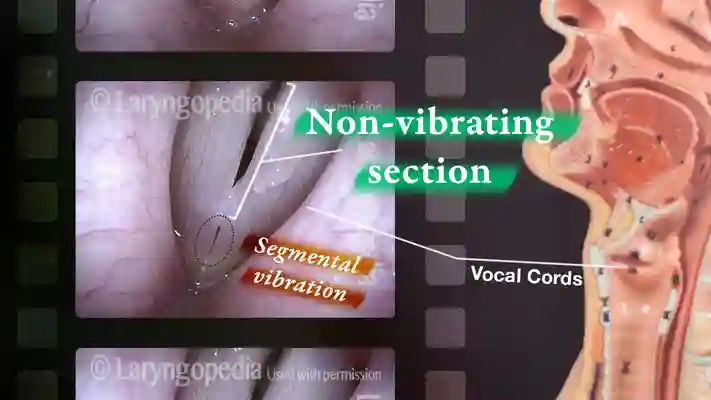
Tin Whistle Segmental Vibration of the Vocal Cords
A squeaking or “tin whistle” voice can be evidence of nodules or other vocal cord injury of overuse.
Background
Normal vocal cords vibrate along their entire length even at very high pitch. When nodules or polyps stop vibration in the mid-cord, a tiny (usually anterior) segment may continue to vibrate, creating and equally tiny “tin whistle” quality.
This video explains the difference between full-length and segmental vibration of the vocal cords, with excellent audio and video (vocal cord) strobe light illustrations of both kinds of vibration.
Audio Description
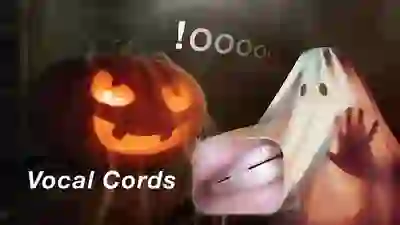
A Halloween Shriek!
Segmental vibration refers to the creation of a very tiny, clear sound that cannot be swelled or crescendoed without some kind of a “squawking” adjustment of the vocal folds.
When the sound occurs, only a short segment of the vocal folds is vibrating rather than their full length. Segmental vibration is most often heard in people who have nodules or polyps.
